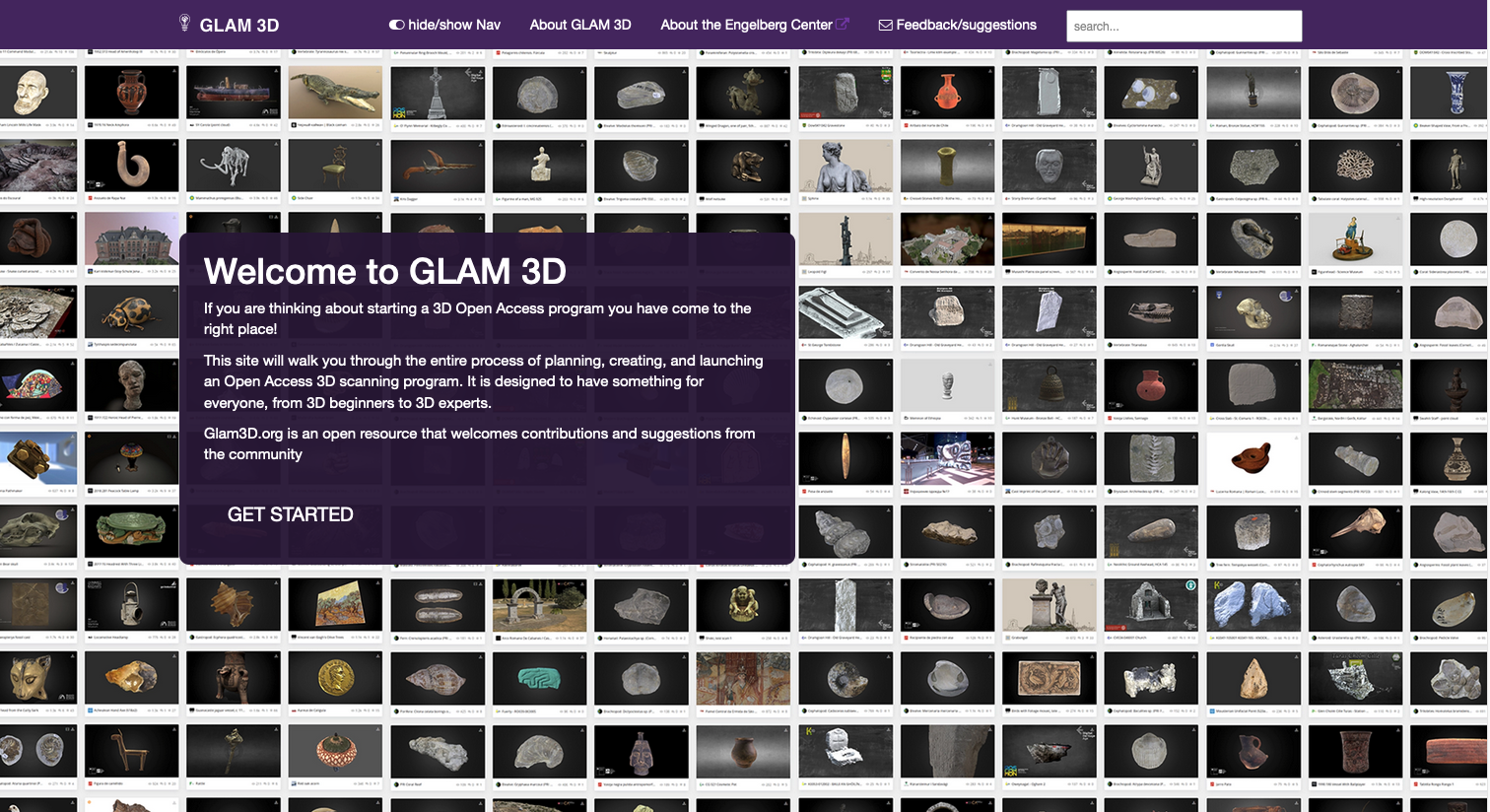Unlocking Our Shared Cultural Resources

Today the Engelberg Center launched Glam3D.org, a guide for digitizing and making available 3D cultural resources as part of an Open Access program.
Digital versions of cultural resources have never been more important. Huge swaths of the world are social distancing, with cultural institutions large and small closed (or severely limited) for the foreseeable future. That makes physically accessing cultural resources impossible for many of us, leaving digital versions as our only options.
Fortunately there is an increasing amount of high resolution digital assets of cultural resources in the form of two dimensional images. Even better, more of these digital assets are available under Open Access terms - free for anyone to use without copyright and other restrictions.
There are far fewer three dimensional digital assets of cultural resources. While many GLAM (Gallery, Library, Archive, and Museum) institutions have operated two dimensional imaging programs for years, they are just starting to explore what it means to create three dimensional digital assets.
Glam3D.org is designed to accelerate that process. Co-created by Sketchfab Cultural Heritage Lead Thomas Flynn and Engelberg Center Fellow Neal Stimler, and Engelberg Center Executive Director Michael Weinberg, Glam3D.org brings together current best practices for digitizing, storing, documenting, licensing, and distributing digital versions of 3D models. Just as importantly, it presents them in the context of Open Access. That means that as our shared cultural resources are digitized they are immediately available for exploration, inspiration, scholarly research, and commercial use - all without having to ask permission.
Glam3D.org is a guide for GLAM professionals and Open Access advocates interested in 3D digitization. It walks users through the process of creating an Open Access digitization program, including selecting objects, running the scanners, archiving the data, licensing the files, and making them available online. The site collects examples and best practices from institutions from around the world to show that these things are possible today.
We are at the beginning of the 3D digitization process. Although Glam3D.org is filled with today’s best practices, we know that those practices are rapidly evolving. That is why Glam3D.org is a collaborative online resource (you can read more about why we decided to make it a website in this companion post). We welcome suggestions and additions from the community, and hope to regularly update the site and new technologies emerge and old practices fall away.
While the site will continue to evolve, there is already lots to explore today. Dive in, take a look, and let us know what you think.
